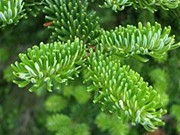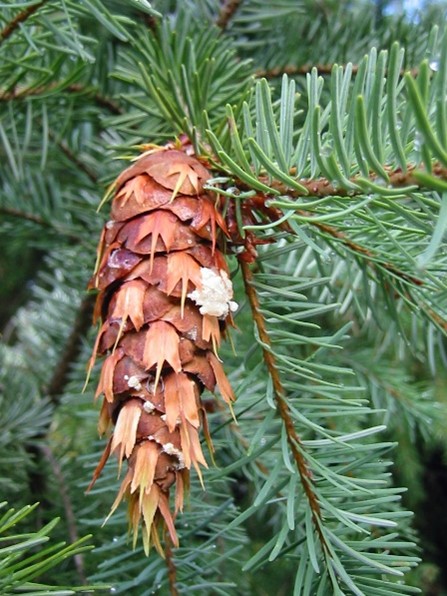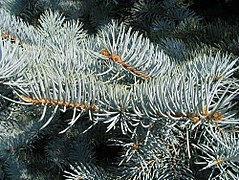Christmas tree identification for kids: Part 2
All Christmas trees are not created equally, you can learn to identify Christmas trees with a few easy tips.

In Part 1 of the Michigan State University Extension article, Christmas tree identification for kids, we learned about identifying pine trees when visiting a local tree farm. In Part 2, we will learn about identifying other types of evergreen trees.
As a refresher, evergreen trees have leaves referred to as needles. Pine needles grow in groups called fascicles, making them a bit easier to identify. However, many other popular Christmas trees have needles that grow directly from the branches, making them a bit trickier.
Tree identification
Fraser fir or Abies fraseri
The needles of Fraser firs are flattened and very dark green with a grove in the middle of the upper side. On the underside of the needles are two silvery-white rows that are bands of stomata. Stomata are tiny pores in plant tissue that allow for the exchange of gases from the atmosphere. They take in carbon dioxide that is needed for photosynthesis. They also aid transpiration, helping the plant limit the loss of water.

Noble fir or Abies procera
The needles of the noble fir are four-sided. Much like the blue spruce, they are over one inch long, and generally look bluish-green. The underside of the needles appear to be silvery, due to the two rows of stomata. They also have one to two rows on the upper surface. Because the needles are generally twisted upward, the lower surface of the branches are exposed.

Concolor fir or Abies concolor
The concolor fir, also known as the white fir, has small needles that are one to one and a half inches in length and are arranged in rows. The needles are typically flat and can be pointed or notched at the tip. Concolor firs are generally a bluish-green when young, turning darker green as they age. The needles also have a nice aroma.

Douglas fir or Pseudotsuga menziesii
Though this tree is named a fir, Douglas firs are not related to true firs, which are in a completely different genus (Abies). Douglas firs were once referred to as the Cadillac of Christmas trees. Their needles are one to one and a half inches long, soft and dark greenish blue. They radiate from the stem in all directions. When you break or crush their needles, they smell like citrus.

Colorado blue spruce or Picea pungens
The one to one and a half inch needles of the blue spruce are an attractive bluish-gray to silvery blue color. The variety ‘glauca’ is especially blue. They are so sharp that you may even need gloves when decorating, especially getting the lights just right. The needles also have a bad odor when crushed. When you break the needle of a spruce, you will see it has four sides and looks like a square.

Enjoy identifying trees as you search for the perfect one!
If you are looking for more information on selecting Christmas trees, check out these other resources from MSU Extension:



 Print
Print Email
Email




